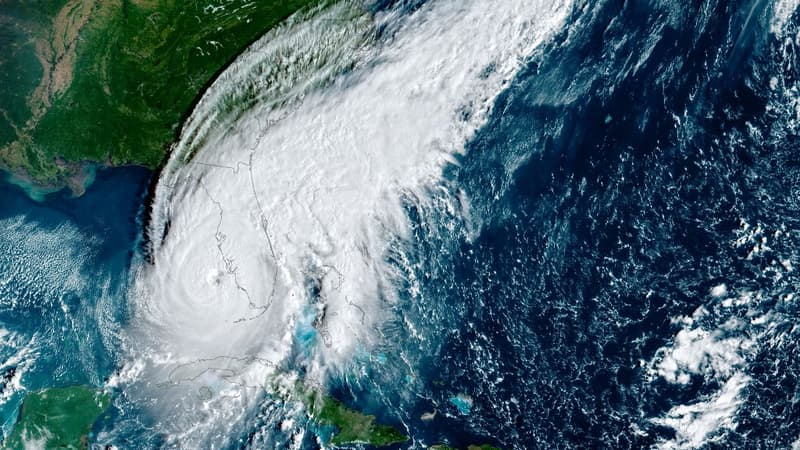Hurricane Ian, considered “extremely dangerous”, made landfall on Wednesday afternoon in Florida, according to the US National Hurricane Center (NHC), after having already caused “catastrophic” flooding.
At sea, poor conditions capsized a boat carrying migrants, and the coast guard is still searching for 20 missing people, three of whom were rescued and four others who managed to swim to shore.
With sustained winds of up to 240 km / h, Ian made landfall on the coast of Cayo Costa, in the southwest of the state, at 3:05 p.m. local time (8:05 p.m. in France), according to the NHC.
The hurricane caused “catastrophic sea submergence, winds and flooding across the Florida panhandle” on Wednesday, according to the center.
One million homes without electricity
More than a million homes were without electricity at 4:30 p.m. (9:30 p.m. in France), mainly around the area where Ian made landfall, according to the specialized site PowerOutage.
In some coastal counties, most residents were without power, according to the site.
The weather phenomenon has already devastated western Cuba in recent days, and is then expected to move inland during the day and emerge over the western Atlantic on Thursday night, according to the NHC.
The streets of Punta Gorda, in the south of the state, where some pedestrians were still walking at noon, had suddenly emptied on Wednesday afternoon, while the sky turned gray and the showers intensified, AFP journalists saw.
completely flooded streets
Strong winds uprooted the branches of many palm trees in the center, shaking even electric poles, while the cyclone was still about forty kilometers from the city.
“The closer you get, obviously the anxiety with the unknown increases,” said Chelsea Thompson, 30, who previously helped her parents secure their home in an evacuation zone southwest of Tampa.
In Naples, in southwestern Florida, images from the MSNBC channel showed completely flooded streets and cars floating in the current.
Marine submersion phenomena could reach more than five meters on the coasts, according to the NHC, while between 30 and 45 cm of precipitation is expected in central and northeast Florida, and up to 60 cm by localities.
“This is a storm that will be talked about for many years,” NWS Director Ken Graham told a news conference.
“Significant Consequences”
In the morning, Florida Governor Ron DeSantis warned that Ian could make landfall as a Category 5 hurricane, the highest category on the Saffir-Simpson scale.
“Clearly this is a very powerful hurricane that will have far-reaching consequences,” he said.
Evacuation orders were given overnight for a dozen counties on the coast.
The director of Fema (the federal agency in charge of natural disaster management) stated that Ian would continue to be a “very dangerous” storm for “the days to come”.
The authorities are preparing “for the historic and catastrophic effects that we are already beginning to see,” Deanne Criswell had stressed even before Ian made landfall.
Arrives in Cuba on Tuesday
Prior to Ian’s arrival, the Tampa airport suspended operations Tuesday afternoon, while the Orlando airport did the same at 10:30 am Wednesday (3:30 pm in France).
Hurricane Ian, then a Category 3 hurricane, had already hit Cuba on Tuesday. Two people were killed in the western province of Pinar del Río, according to Cuban state media. The island and its 11.2 million inhabitants have been completely plunged into darkness.
As the surface of the oceans warms, the frequency of more intense hurricanes, with stronger winds and more precipitation, increases, but not the total number of hurricanes.
According to Gary Lackmann, a professor of atmospheric sciences at North Carolina State University in the United States, several studies have shown a “possible link” between climate change and a phenomenon known as “rapid intensification” – when a relatively weak tropical climate the storm strengthens to a Category 3 or greater hurricane within 24 hours, as was the case with Ian.
“There is still a consensus that there will be fewer storms in the future, but the bigger ones will be more intense,” the scientist told AFP.
Source: BFM TV


